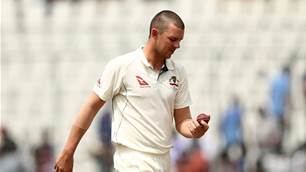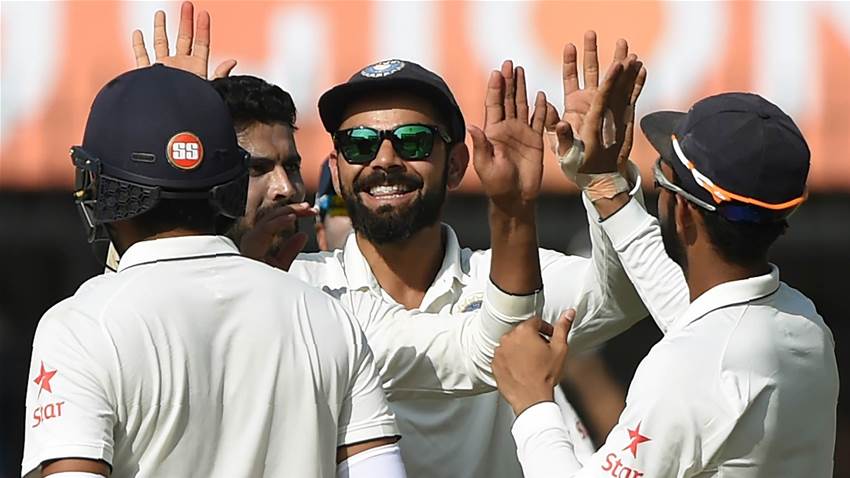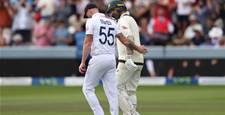India fought their way back into the series by winning two of the three sessions but Australia took the middle one proving that they weren’t going to let go of their initial hold on the series easily.
At the end of it all India had secured a lead of 126 runs and still had 6 wickets in hand.
Josh Hazlewood said the wicket might be becoming easier to bat on.
“I think the wicket’s a little bit dry now,” he said. “When it does stay low or jumps it’s a little bit slow off the wicket so I think that the batsmen can react a little bit better and try and counter that. On day one and two whether it did go up or down it was quite sharp and quickly.”
Leading up to tea India had managed to sneak ahead in the Test before Josh Hazlewood came up with an inspired spell of bowling. He took 2-11 in four overs having already bowled Abhinav Mukund for 16 with the fourth ball after lunch. When he’d taken the ball for what was his third spell India was 1-100 and leading by 13 runs.
The heated discussions and goading of the batsmen had been put to one side and they just played some hard-nosed cricket. When Ravi Ashwin had Mitchell Starc caught in the deep for 26 to end a 4- run seventh wicket partnership the remaining wickets fell with only seven more runs added.
KL Rahul scored his second fifty of the match for the first time in Test cricket but was then outdone by a wider delivery from Steve O’Keefe.
Hazlewood then produced his burst. He was bowling straighter than usual. Normally he uses a nagging line just outside off-stump that keeps batsmen tied down or draws them into edges for the men stationed behind the wicket.

“In Australia you bowl in that channel outside off looking for nicks and things like that. It bounces through a lot better and (with) a little swing as well,” Hazlewood said. “Obviously here that’s not the case and with that up and down movement of those cracks and off that uneven surface it just brings lb (lbw) and bowled into place which is probably how you’re going to get your wickets as quicks. Sometimes it’s hard to change that little line and execute.”
It paid off though. Virat Kohli, who has only scored 40 runs in the series so far, fell lbw for 15. He used up another review in the process although it was a marginal decision as to whether the ball hit the pad before the bat or the other way around.
“Temperatures are rising a little bit,” Hazlewood said. “It’s obviously pretty intense out there but we try to stick to playing on skills and be quite calm out there and I think that’s when we play our best cricket.”
India then gambled by moving Jadeja up to bat at number five. It was an unsual move and seemed to be one of intent.
“We wanted to have the right-left (hander) combination going,” India’s batting coach, Sanjay Bangar, explained. “We wanted to get Lyon slightly away from his line of attack because whenever a left hander comes Lyon generally comes around the wicket and he favours more bowling more outside the rough to the right-handers. Just, maybe, to upset the rhythm.’
India was only leading by 25 at the time and wanted to unsettle Australia. However, a loose drive over the ball saw Jadeja’s middle stump flattened as Hazlewood continued to bowl straight.
The final session was entirely India’s. Cheteshwar Pujara repelled everything that Australia could throw at him. He found a willing partner in Ajinkya Rahane who despite now playing in his 34th Test had never batted in a Test at the venue.
They put on a determined, unbeaten partnership of 126 runs to start to wrestle the match away from Australia.
“They showed a bit more intent,” Hazlewood said. “Getting down the other end and keep rotating the strike is probably the key (to their success). I think that the two guys did pretty well.”
The scales could tilt either way on the fourth day of a pulsating Test.
Related Articles
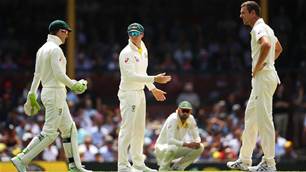
Australia Test team regroups after scandal
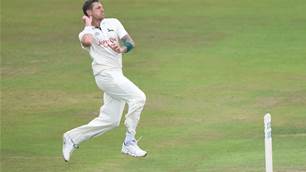
Pattinson: I still feel a part of The Ashes
